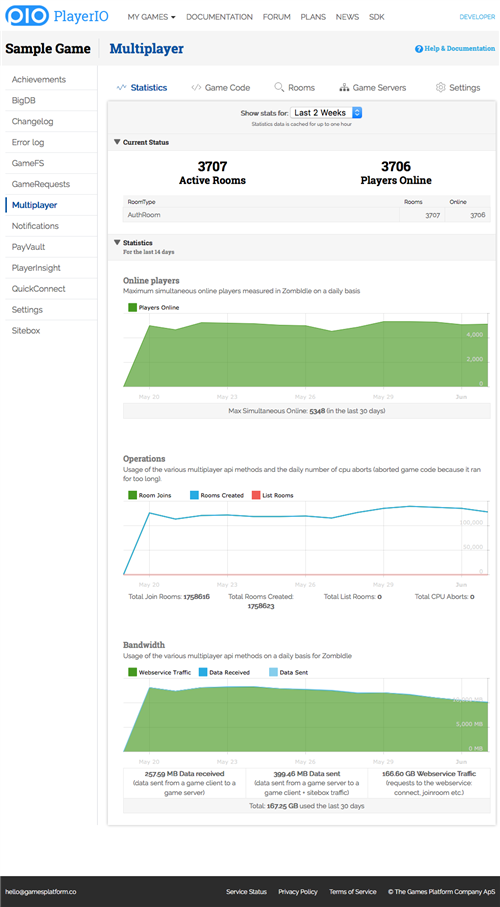Multiplayer
The Multiplayer service allows you to build real-time games with your own custom server-side code, and to run that code on our dedicated and distributed game servers.
Essentials
Before getting started, we recommend that you read through the Multiplayer Essentials page which will give you an overview of the system and an explanation of the terms and concepts that we use throughout this documentation.
Multiplayer Essentials »
Serverside Code
The Serverside section describes how to implement the serverside code for a multiplayer game, how to respond to the various events that can occur, and how to set up timers to run code at other points in time.
Serverside Code »
Clientside Code
The Clientside section describes how to implement the clientside code for a multiplayer game, how to create, list and join rooms, and how to send messages to those rooms.
Clientside Code »
Messages
The Multiplayer Service uses its own network protocol for sending messages back and forth. This section describes how these messages work, and contains some best practices for how to use them properly.
Messages »
Security and Permissions
This section contains information about the security features of multiplayer code, and also contains information about various limits and restrictions for multiplayer code.
Security and Permissions »
Development Server
When you download the PlayerIO SDK, you also get the development server which allows you to create and test your multiplayer code locally before deploying to our live server.
Development Server »
Multiplayer Control Panel
There is a fully featured Control Panel where you can get statistics on how your game is performing, manage your serverside code, and manage which game server clusters your game should run on.
Control Panel »
Multiple Clusters
You can have multiple clusters of game servers in different geographical regions, and this section explains how you can control where each room is created.
Multiple Clusters »
